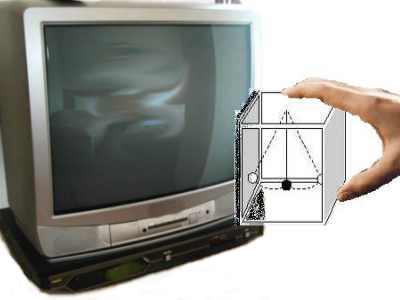Parallel Plate Capacitor at Home
Cover a part of the screen of your TV with a sheet of aluminium foil. Wrap another piece of foil around a sheet of cardboard, a writing pad, or a flat board in order to obtain a second capacitor plate (in fact, your palm will serve the purpose). Take another piece of foil, roll it into a small ball and attach it to a thread. You have made an "electric pendulum". With the TV off, suspend the pendulum so that the ball balances freely a few cm in front of the aluminium on the screen.
Turn the TV on for a while. Observe what happens. Turn it off. Now, bring the aluminium-covered board (or your palm) close to the pendulum (parallel to the screen). The ball will oscillate back and forth between the two capacitors plates and you will be amazed how long it takes for that small charge-carrier to discharge the screen. You may control the frequency of the transport of charge by varying the distance between the capacitor plates. If it is dark in the room, you will see sparks here and there. Bring a fluorescent lamp close to the screen and you will have extra fun.

The above setup is the simplest version of my experiment. The diagram at right shows a more sophisticated one: "A Pocket Electric Field Detector". To make it one needs a transparent plastic box (like those that video tapes come in), aluminium foil, a thread, some glue or sticky tape, and that's it. Your creative ability will lead to new experiments and observations using this or a similar arrangement. Have fun with your PEFiD!
Wojciech Dindorf
Physics Teacher, Vol. 42, April 2004